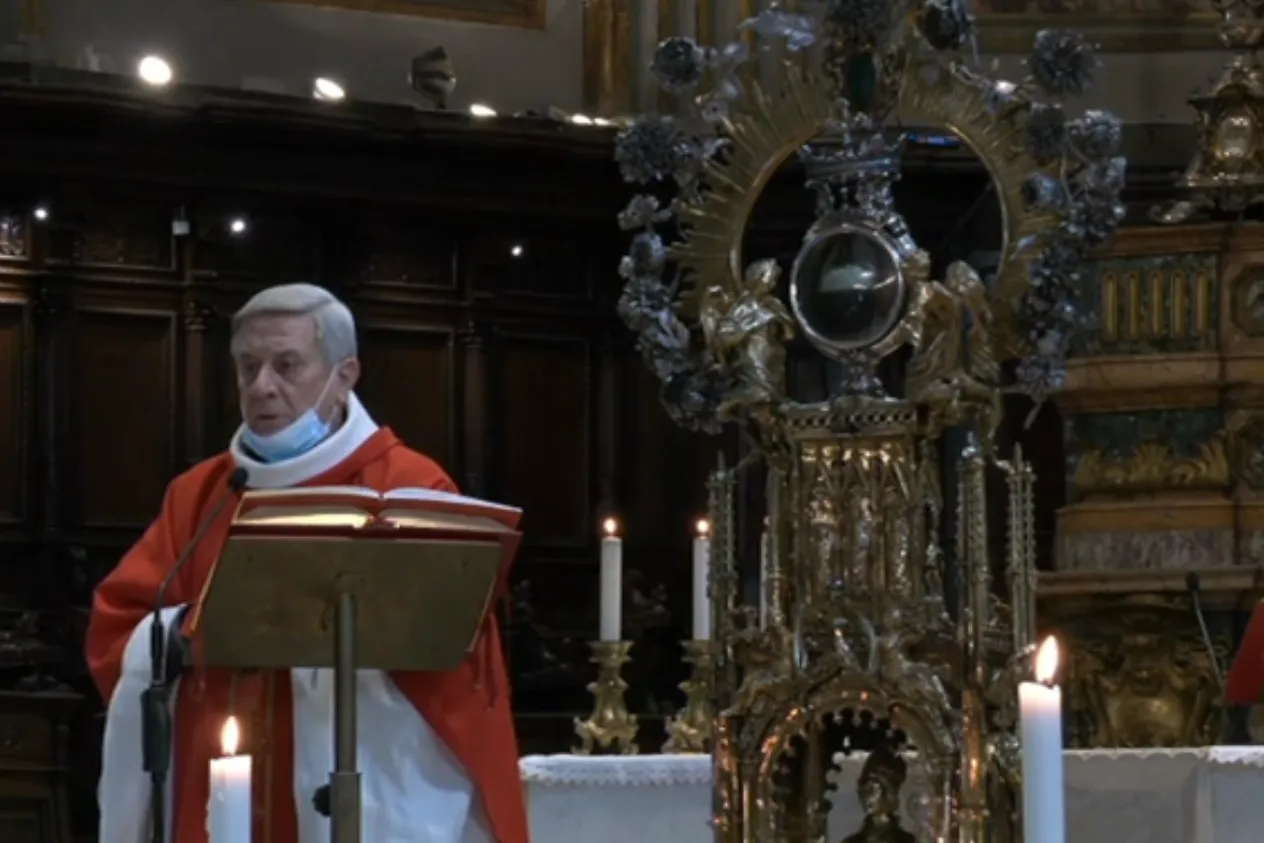The Blood of St. Januarius Fails to Liquefy at Start of December Anniversary
During the miracle, the dried, red-colored mass confined to one side of the reliquary becomes blood that covers the entire glass.

NAPLES, Italy — The blood of St. Januarius, patron of the Italian city of Naples, remained solid on Thursday morning, so far failing to liquefy in December for the second consecutive year.
The liquefaction traditionally happens at least three times a year: Sept. 19, the saint’s feast day, the first Saturday of May, and Dec. 16, the anniversary of the 1631 eruption of Mount Vesuvius.
The third-century bishop’s blood, contained in a circular sealed vial, liquefied in both May and September this year, but did not change its state in December 2020.
During the miracle, the dried, red-colored mass confined to one side of the reliquary becomes blood that covers the entire glass. In local lore, the failure of the blood to liquefy signals war, famine, disease, or other disaster.
Msgr. Vincenzo de Gregorio, abbot of the Royal Chapel of the San Gennaro Treasure, opened a safe containing a reliquary at 9 a.m. local time on Dec. 16, according to local media.
The reliquary was displayed in the sanctuary of the Cathedral of the Assumption of Mary during morning Mass.
At the end of the Mass, broadcast live by the Italian television channel Canale 21, the blood was checked again but remained solid. The celebrant urged the congregation to intensify their prayers, but not to be afraid.
Locals will continue to pray throughout the day that the miracle takes place.
The bones and blood of St. Januarius — San Gennaro in Italian — are preserved as relics in Naples Cathedral.
The bishop of the southern Italian city is believed to have been martyred during Diocletian persecution.
The reputed miracle is locally known and accepted, though it is yet to receive official Church recognition.
Dec. 16 marks the anniversary of Naples’ preservation from the 1631 eruption of nearby Mount Vesuvius.
But according to an Italian journalist, it is unusual for the miracle to take place on Dec. 16. The blood has liquefied most often on St. Januarius' feast day of Sept. 19, and on the Saturday before the first Sunday of May.
Vatican journalist Francesco Antonio Grana told CNA last year that the liquefaction “almost never” happens on Dec. 16 and that in the last 34 years the number of times it has happened “can be counted on one hand.”
- Keywords:
- st. januarius
- blood of saint fails to liquefy


















